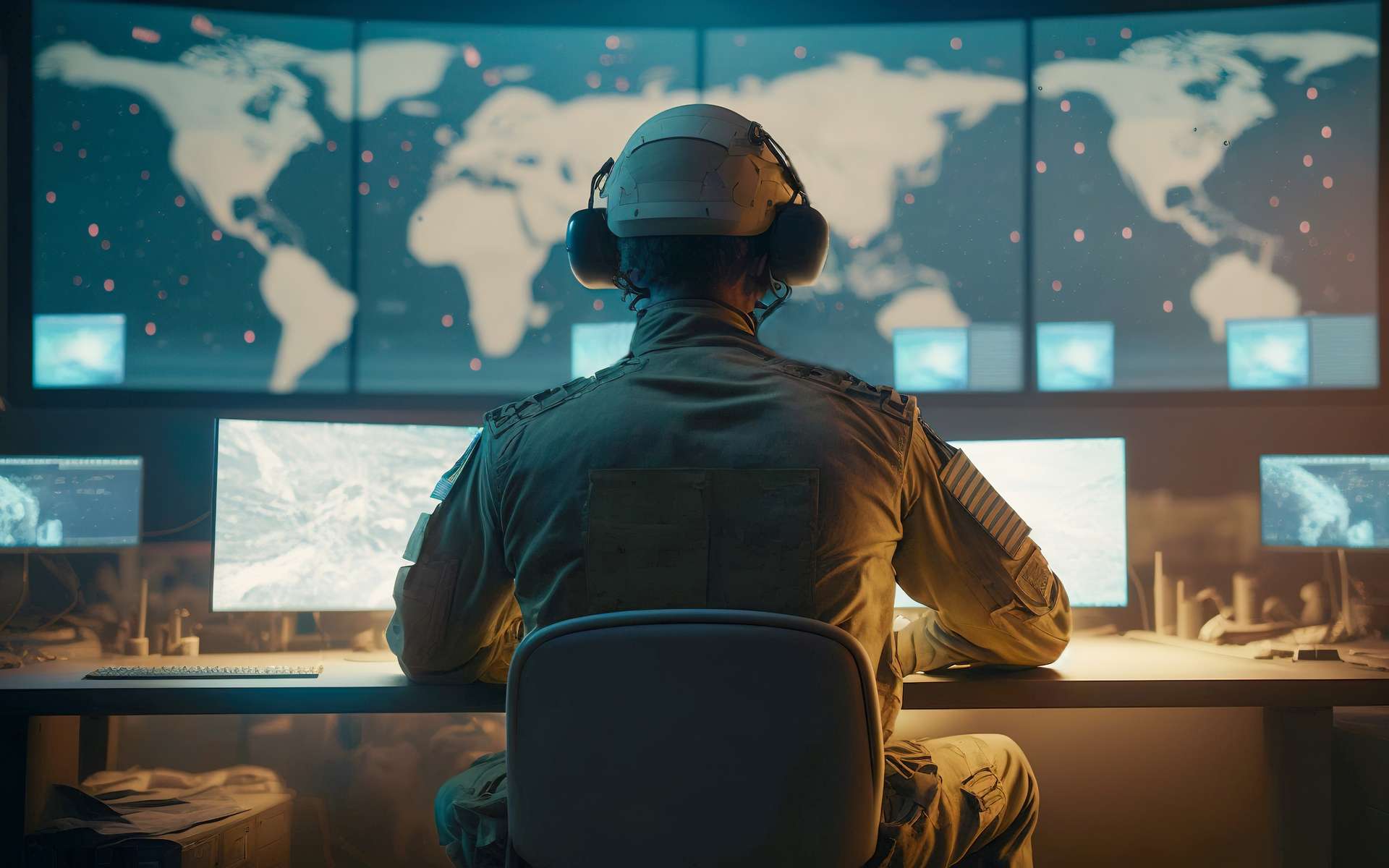
You may also be interested
[EN VIDÉO] Spy satellites: mission to the land of the stars Among the satellites placed in orbit around the Earth, several hundred would be satellites…
The scenario of the exercise, partly grafted on that of Orion, was as follows: a power, named Mercury, seeks to destabilize another power, Arnland, an ally of France, the latter decides to provide assistance by deploying a first force by an amphibious landing and a parachuting of troops on an airport. Mercury then transposes the conflict into space and performs various maneuvers of rapprochement on communication satellites in geostationary orbit, using a satellite that has been dormant for several years in graveyard orbit (located 300 kilometers above), which comes to drop jamming nanosats. Mercury also performs approach maneuvers with observation satellites, as well as laser illuminations.
This forces the Space Command (CDE) to move its satellites, which costs time and fuel. His decision was then to neutralize the station-keeping centers of the Mercury satellites, signifying an escalation of the conflict but which made it possible to regain control of the French satellites.
Back to the two weeks of training. © Air and Space Force
This third edition was managed by the Space Command, on their premises, at Cnes, in Toulouse. A total of 200 people were mobilized. Colonel Guillaume Bourdeloux led the construction of AsterX 2023, and also acted as space component boss during the exercise.
Futura: What were Mercury’s space capabilities?
Colonel Guillaume Bourdeloux: Mercury was a complete space power. It had telecommunications satellites in geostationary orbit and in low orbit, positioning, optical observation, radar, electronic listening, with clearly superior reconnaissance means, more numerous, and better revisit rates. Mercury was able to see our maneuvers on land, at sea, and potentially in the air. It also had anti-space warfare assets such as laser glare, satellites capable of approach and rendezvous maneuvers, but we decided not to have an anti-satellite missile. The balance of power was clearly against us. Our asset was to operate in coalition with the United States, Germany, Italy, Belgium and the space component of NATO.
Futura: Was the exercise extended over time by focusing on future resources?
Colonel Guillaume Bourdeloux: AsterX aimed to train with the means of the moment, with however a small projection in two or three years. For example, the command structure is the one we imagine for 2025, once we have our quarters in Toulouse, and all our human and logistical resources. We also imagined being able to have a reactive launch system [permettant de mettre en orbite un satellite en très peu de temps, à savoir quelques jours maximum, NDLR], with a small airborne rocket under the wing of an Air Force plane, although we do not currently have the means. That made it possible to have an object which could intervene, discourage or bring a capacity complement. For example, an observation satellite destroyed by laser illumination can be replaced at a moment’s notice.
Futura: What realities of the space environment did you take into account during the exercise?
Colonel Guillaume Bourdeloux: We played with 5,000 objects in space. There was no added value in simulating an environment with more than 30,000 pieces of debris, as is the case in reality. We also simulated about twenty sensors (telescopes, radars, etc.).
Futura: What does this exercise highlight?
Colonel Guillaume Bourdeloux: We put into practice what was very clear to us in theory: if we wage war in space against a power like Mercury, we lose it. It is also clear that if one does not have freedom of access to space nor of action in space, then one is annoyed everywhere. So, we must have the means to prevent the enemy from coming to disturb us in orbit.
Futura: What’s new in AsteriX23 compared to the other two previous ones?
Colonel Guillaume Bourdeloux: It was the first time that we trained in a joint environment, with all the components. To implement, in real time, the spatial component. It is also the first time that we were not in the reaction, but rather in the anticipation. We took the time to study Mercury, its actions, and also ours.
Futura: This is the first time that this exercise has been carried out in a total war setting, what is the link between AsterX23 and the war in Ukraine?
Colonel Guillaume Bourdeloux: The exercise required two years of preparation, so no real link. But, of course, we have long anticipated an increase in competition, even confrontation. The exercise was planned before the start of the war in Ukraine because the General Staff had asked us to prepare for high intensity exercises.
Futura: Can we really speak of “war” in space today?
Colonel Guillaume Bourdeloux: In the exercise, it is unclear what the enemy will do. We know our limits, as a nation that respects international law and the law of armed conflict. We signed commitments not to create multiple debris by anti-satellite fire. We are also in a defensive position rather than an offensive one in the sense that we do not want to destroy Mercury, but preserve our means of action. But not everyone has the same restrictions. We can therefore say that we are in a sort of space war, but below the threshold of conflict, with non-kinetic actions that do not break in orbit. We rather seek to neutralize in a reversible way, without really destroying, but rather inhibiting.
Futura: Are there more and more maneuvers of rapprochement or inspection of our satellites by those of foreign powers?
Colonel Guillaume Bourdeloux: This is becoming routine for the major powers (USA, China, Russia). These behaviors are becoming commonplace but while remaining below the threshold of conflict. It’s mostly a show of force.
Game of cat and mouse between the American spy satellite USA270 and the Chinese spy satellites Shiyan. © Comspoc
Futura: What is the precise role of Cnes in the exercise?
Colonel Guillaume Bourdeloux: The contribution is threefold. First, they host us. With Onera, they help us set up the simulation (5,000 objects, 20 sensors, etc.), allowing us almost total freedom of action. Finally, Cnes works with us to maintain some of our satellites and in space surveillance.
About the Cnes, Futura was also able to have a brief return from Lionel Suchet, deputy general manager of the agency. It specifies the role of Cnes in the exercise. The latter, according to him, remarkably well “.
Futura: What is the feedback from this kind of exercise for Cnes?
Lionel Suchet: You learn to work with forces at the speed where people need information or action. In space, when something goes wrong, we are used to putting everything in a safe place and thinking, waiting, finding solutions, and starting again. In a military operation, you can’t do that, you have to move forward at the speed at which things have to move forward and that changes a lot of things in terms of the operational concept, team responsiveness, risk-taking because that must be answered and not during the day. These are new things that need to be better mastered and taken into account in tomorrow’s space operations. And that is very interesting.




GIPHY App Key not set. Please check settings